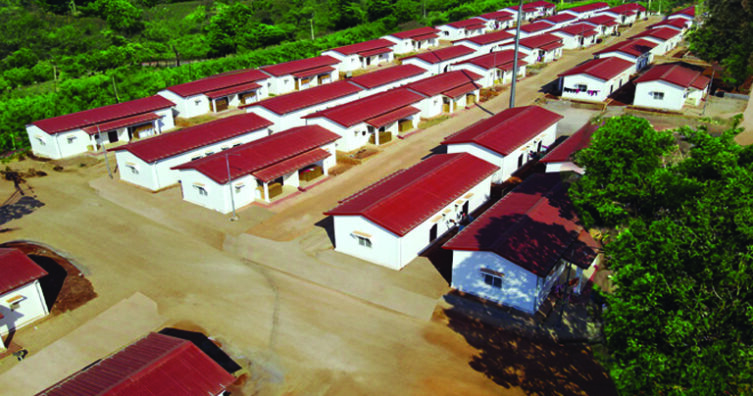The engineering strategies of Tata Steel Nest-In are focused on creating long-lasting and durable prefabricated structures. High-quality materials, for example, guarantee that structures can withstand immediate obstacles and inclement weather, extending their lifespan and avoiding frequent repairs or replacements.
In this interview, we explore the advantages of prefab construction, Nest-In’s resilient engineering strategies, recent groundbreaking projects, and how they ensure scalability, affordability, and inclusivity while raising awareness about the green prefab advantage.
How do prefabricated structures address both immediate necessities and long-term sustainability objectives amid dynamic construction trends?
Prefabricated structures provide a comprehensive solution that addresses immediate needs and long-term sustainability goals in the ever-changing building scenario. They are vital in several critical areas.
First of all, prefabrication is known for its speed. Prefabricated structures outperform traditional approaches in crises or scenarios requiring rapid shelter deployment. The structure’s components are manufactured off-site, and on-site fast assembly satisfies urgent needs while promoting long-term sustainability by lowering on-site labour and energy consumption.
Secondly, resource efficiency is an appealing aspect. Prefabricated structures need fewer material resources (as compared to traditional techniques of construction), resulting in lower greenhouse gas emissions and more sustainable construction. There are additional energy savings benefits over the product lifecycle since the thermal insulation is superior to RCC. This guarantees that resources and energy are used efficiently.
Additionally, prefabricated structures can be tailored to meet the project’s needs, ranging from modular toilets to G+ structures. They can be used to address necessities such as housing, healthcare, educational institutions, corporate infrastructure, In&Out stores, and so on. The main structure is made of steel, which allows the structure’s core material to be recycled or salvaged (unlike traditional structures, where scrap on structure deconstruction has little value).
Reduced disruption and wastage are also significant advantages. Prefabrication minimises construction disruption on-site, making it perfect for densely inhabited or environmentally sensitive places. Prefabrication also contributes to sustainable construction practices by minimising on-site construction waste because the fabrication is done off-site, supporting the long-term well-being of ecosystems and communities.
Finally, technical progress is a vital aspect of prefabricated structures. Precision and quality are provided by automation and machine cutting. These technological improvements continue to improve prefab building efficiency by optimising processes, minimising material waste, and increasing overall quality.
Prefabricated buildings enable quick, efficient, and adaptable responses to immediate demands while adhering to long-term sustainability standards. They accomplish this through resource efficiency, energy conservation, waste reduction, and cutting-edge technologies. As a result, they emerge as a viable and long-term solution for satisfying various real estate project/structure needs in a constantly changing construction context.

Could you elaborate on the engineering strategies ensuring Tata Steel Nest-In’s prefab constructions’ resilience in challenging conditions?
Tata Steel Nest-In’s engineering strategies focus on creating long-lasting and durable prefabricated structures. High-quality materials, for example, guarantee that structures can withstand immediate obstacles and inclement weather, extending their lifespan and avoiding frequent repairs or replacements. These structures are also created with strong structural considerations, considering transportation and assembly loads and environmental factors like snow, wind, earthquakes, and more. Advanced computer simulations and modelling are essential for projecting how these structures will operate under different conditions.
Tata Steel Nest-In incorporates seismic-resistant characteristics (compared to RCC) in their designs in earthquake-prone zones, improving the constructions’ immediate safety and long-term endurance. Their climate-responsive design philosophy assures that these prefabricated structures can survive distinct climate challenges with energy-efficient insulation, proper ventilation, and optimal shading for comfort and sustainability. Furthermore, they prioritise sufficient site evaluation and foundation design to offer immediate stability, considering soil characteristics and potential ground changes over time. The company promotes sufficient waterproofing and moisture management solutions to combat water-related difficulties, such as drainage systems and regular maintenance supplies, to prevent long-term structural degradation. Rigid quality control measures used throughout production and assembly and frequent inspections and testing ensure the structures’ ongoing resilience and strength.
We have reached a 4X faster construction speed and have achieved better lifecycle energy and cost savings over the product lifecycle.
How does Nest-In guarantee scalability and inclusivity in eco-friendly prefab projects?
Several essential factors are commonly employed to ensure scalability, affordability, and inclusiveness in environmentally friendly prefab projects.
The importance of standardisation and modular design cannot be underestimated. Using standardised components and modular sections that can be mass-produced based on the required customisation reduces the scale of prefab projects. As a result, scalability for projects of various sizes is enhanced. Furthermore, the adaptability of modular designs ensures inclusivity by meeting a wide range of demands, such as housing, business complexes, modular sanitation solutions, healthcare facilities, and educational spaces.
Efficient production procedures are also essential for achieving these goals. Large-scale production is made possible by streamlined and efficient manufacturing, which meets the growing demand for sustainable prefab projects.
Another crucial component is the use of environmentally friendly materials. For greener buildings, many eco-friendly energy interconnections are conceivable with pre-fab. Energy efficiency and using renewable energy sources, such as solar panels, allow scalability in meeting the energy needs of larger prefab projects. This technique allows families to build quickly and live comfortably over time.
What approaches does Nest-In employ to involve the community and enhance awareness of green prefab advantages?
Community involvement and awareness are vital in promoting the benefits of green prefab construction. Organisations use a variety of strategies to engage the community and spread the word about these benefits. Such initiatives include exhibitions, seminars, and community activities, including demonstrations and expert discussions.
Spokesperson – Prakhar Aggarwal, Chief S&S (Nest-In Business)
Cookie Consent
We use cookies to personalize your experience. By continuing to visit this website you agree to our Terms & Conditions, Privacy Policy and Cookie Policy.





















